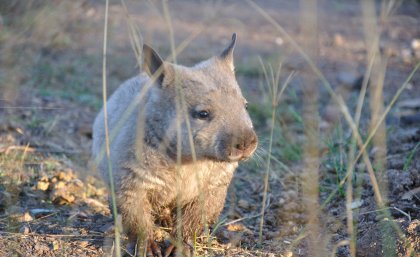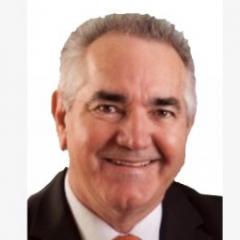
Do you know the difference between freezing wombat sperm and koala sperm?
After 13 years researching wombat behaviour and reproduction, Associate Professor Stephen Johnston and his team from The University of Queensland School of Agriculture and Food Sciences are experts on the topic.
“We’ve been very successful in developing techniques to freeze wombat sperm,” Dr Johnston said.
“The more challenging part has been pioneering techniques to detect when female wombats are ovulating (as their oestrus is difficult to detect) to artificially inseminate them at the optimal time.
“Conversely, we have the opposite problem with koalas.
“Koala sperm doesn’t freeze well. However, researchers find it easier to detect when female koalas are in heat.”
The UQ team’s expertise in this area has resulted in 15 new common wombat and southern hairy-nosed wombat offspring, including three in the current breeding season.
It has also led to 24 full peer-reviewed journal publications and four UQ higher degree theses.
In the near future the UQ researchers hope to transfer their depth of knowledge about wombat reproduction to more of Australia’s favourite furry friends.
“We are successful at producing reliable results in one aspect for one species; and at another in another species,” Dr Johnston said.
“It would be great to achieve similar cryopreservation success rates in koala sperm.
“We hope the skills we are developing in this wombat project will be directly applicable to the koala and other marsupial species, such as endangered wallaby species and gliders.”
Dr Johnston said UQ had strong research partnerships with organisations such as Safe Haven - AACE (Australian Animals Care and Education) sanctuary in Mt Larcom, Central Queensland.
Two UQ students - Alyce Swinbourne (PhD) and Zilong (Jack) Du (Master of Philosophy) - have recently completed studies at the sanctuary and are writing up their findings.
“We have also conducted collaborative research that has led to improvements in southern hairy-nosed and common wombat captive husbandry, behaviour and reproduction,” Dr Johnston said.
“This has happened in partnership with organisations including AACE, Dreamworld, Taronga Western Plains Zoo, Rockhampton Zoo and The Wombat Foundation.
“With this level of academic activity and breeding success, we do regard ourselves as the premier scientific authority on wombat captive reproduction in Australia and, therefore, the world.”
Associate Professor Johnston said a new research project on endangered northern hairy-nosed wombats would concentrate on improved husbandry for wild animals in captivity.
There are only 200 estimated northern hairy-nosed wombats left in the wild, most at Epping Forest National Park near Clermont, Central Queensland, although work on trying to establish a second “insurance” population at the Richard Underwood Nature Refuge began in 2009.
The work at Safe Haven is designed to better understand the biology of the northern hairy-nosed wombat to improve the success of the translocation process.
Other UQ academics leading the project are Dr Tamara Keeley of UQ’s School of Agriculture and Foods Sciences and Professor Clive Phillips, Director of UQ’s Centre for Welfare and Ethics, in association with Ms Tina Janssen - General Manager AACE (Australian Animals Care and Education).
Media: Steve Johnston, s.johnston1@uq.edu.au, 0408 280 963.



